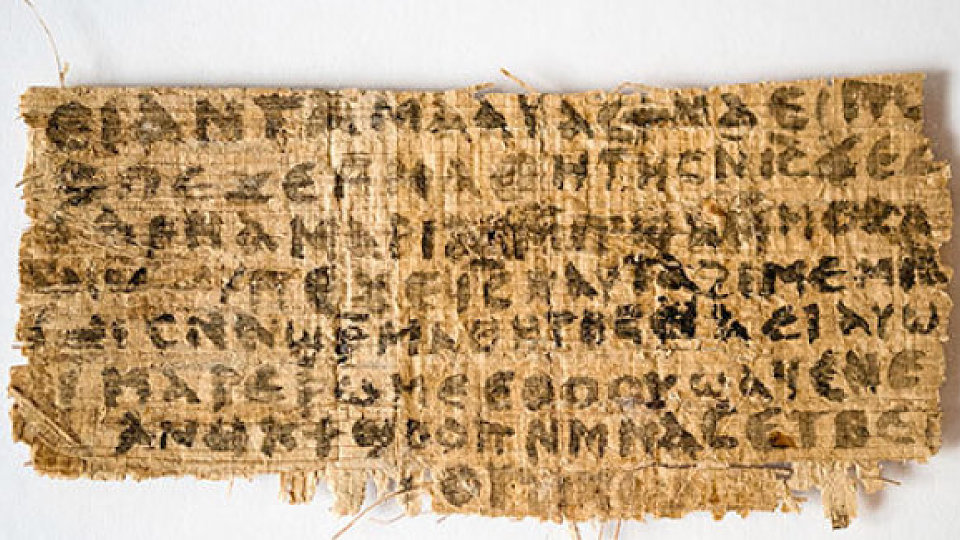Is Papyrus Fragment Suggesting Jesus Had a Wife Authentic?

Earlier this week, the news media reported the discovery of a papyrus fragment (an ancient scrap of paper) that quotes Jesus as mentioning his “wife.” I felt the timing of this announcement was perfect, given my sermon last week in which I walked through the formation of the New Testament and how books either did or did not make it into the New Testament (watch that sermon here). We learned that the gospels in our New Testament draw upon the earliest strata of information about Jesus and date to the first century. The materials the gospel writers drew from date back to the earliest decades of the Christian faith and to eyewitness accounts. By the end of the first century and beginning of the second century, these gospels are quoted by the early church fathers. On Tuesday, Harvard professor Karen King announced at a conference in Rome the text of a papyrus from the 300’s in which Jesus mentions Mary (presumably Magdalene) as his “wife.” Since the announcement, some have questioned the authenticity of the fragment, but let’s assume it is authentic. The fragment comes from the 300’s, 200+ years after the gospels were written. It is said that it could be a Coptic translation of a Greek document from the middle of the second century. Perhaps it is, but we have no evidence of this. What we do know is that in the second, third and fourth centuries, a host of “gospels” and other works were written, purporting to have information about Jesus or the apostles. They contain interesting and often fanciful stories about Jesus as a boy, or esoteric sayings placed on the lips of Jesus as a man – sayings that supported the particular leanings of this or that group. Here are the questions I would ask about the idea of Jesus being married to Mary: If Jesus were married to Mary Magdalene, why would none of the gospels, nor any of the earliest witnesses mention this? Mary is clearly an important person in the gospels, and she is a follower of Jesus. She is the first witness to the resurrection. She may even have loved Jesus. But there was no shame in being married in the first century. Had Jesus been married, Christian theology would have developed around that idea. But neither the gospels nor the earliest documents of the Christian faith – the letters of Paul – mention this. The early church fathers don’t mention it either. So, none of the documents we have from the earliest period of the Christian church make reference to this idea. But now, a fragment from a document from the 300’s, not quoted by any of the church leaders from the first three centuries of the Christian faith, is found with Jesus mentioning his wife. This would not lead me to believe this was a reliable piece of information. Last week we noted that the criteria by which documents made it into the New Testament were apostolicity, catholicity and consistency with the gospel. Apostolicity meant that a document was written by an apostle or someone having access to or associated with the preaching of the apostles. Catholicity meant that the document was accepted, used by and found helpful to a majority of churches across the ancient world. Consistency related to whether the message was consistent with the earliest strata of documents the church had – the letters of Paul and the four gospels. This document appears to bear none of these marks. So, it is interesting and fun to read these documents to see how the gospel began to be reshaped and ideas added to it in the centuries after the time of Jesus, but such finds don’t lead me to question the accounts we have in the gospels of the New Testament. By the way, there is an online library of both the earliest Christian documents, the writings of the church fathers and these documents that were rejected by the churches. It is fascinating to read them. If you’d like to read them for yourself, click here.